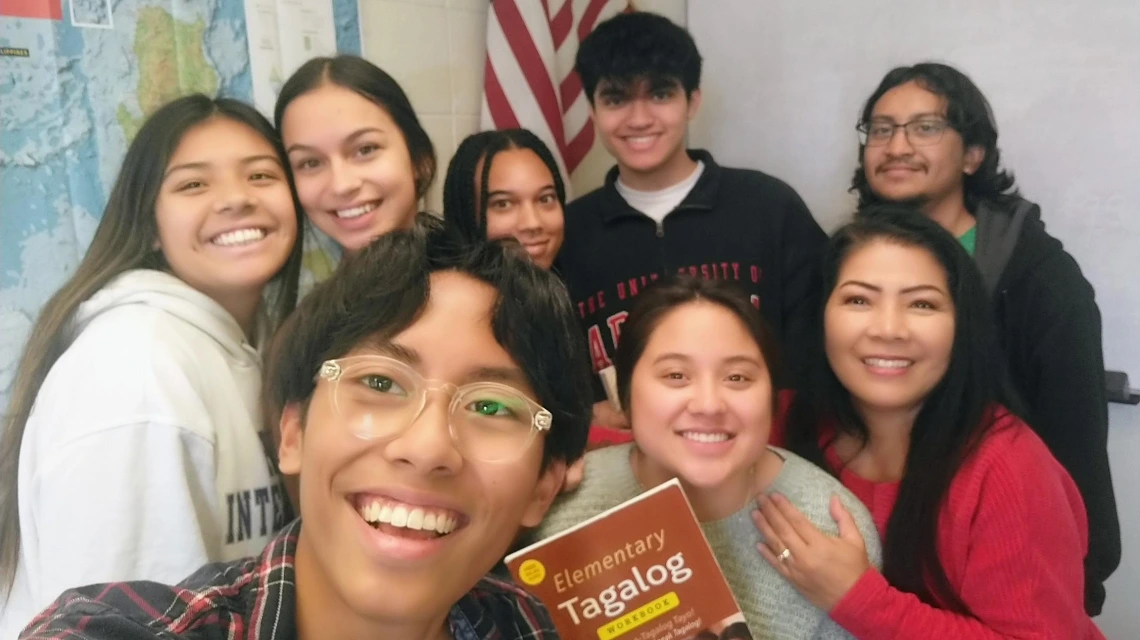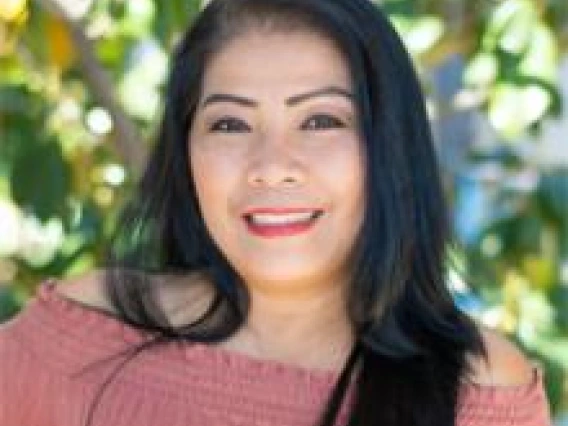Tagalog is taught by the Critical Languages Program at the University of Arizona with credit and non-credit options available. Small class sizes, expert tutors, and immersive learning that connects language with lived experience.

Mabuhay! Welcome to Tagalog Class!
Tagalog is an Austronesian language spoken as a first language by a quarter of the population of the Philippines and as a second language by the majority. Its standardized form, officially named Filipino, is the national language and one of two official languages of the Philippines, the other being English. It is related to other Philippine languages, such as the Bikol languages, Ilokano, the Visayan languages, and Kapampangan, and more distantly to other Austronesian languages, such as the Formosan languages, Indonesian, Hawaiian, and Malagasy.
What will you be able to do?
Explore the Learning Outcomes for 101-202 Courses
Get a Student Perspective
Complete the UA Language Requirement
For a B.S.
Complete courses 101 and 102
For a B.A.
Complete courses 101, 102, 201, 202
"Tita Cecille really does care about her students and wants them to succeed! She wants to see us grow in our language journey and has helped us a lot!"
CLP Student | Tagalog 102

Cecilia Muller, Tagalog Tutor
Ready to Register?
For Credit
If you are a beginner, sign up for CRL 101 under course section number 381 in UAccess.
Not sure where to start?
If you have studied the language before or have spoken it at home, you should reach out to the tutor of your language or the Program Coordinator to schedule a free informal placement assessment.
If you do not see a level that you need offered in UAccess, reach out to critlang@arizona.edu.
Want to take a non-credit course?
You may have interest in learning this language but do not need university credit. We offer non-credit, community online courses for adults, as well as individualized tutoring. (No UA matriculation needed). In person class opportunities may be available depending upon class capacity.
More About Tagalog
The word Tagalog is derived from the endonym taga-ilog ("river dweller"), composed of tagá- ("native of" or "from") and ílog ("river"). Very little is known about the ancient history of the language. Linguists such as Dr. David Zorc and Dr. Robert Blust speculate that the Tagalogs and other Central Philippine ethno-linguistic groups originated in Northeastern Mindanao or the Eastern Visayas.
The Tagalog homeland, Katagalugan, covers roughly much of the central to southern parts of the island of Luzon—particularly in Aurora, Bataan, Batangas, Bulacan, Camarines Norte, Cavite, Laguna, Metro Manila, Nueva Ecija, Quezon, Rizal, and large parts of Zambales. Tagalog is also spoken natively by inhabitants living on the islands, Marinduque, Mindoro, and large areas of Palawan. It is spoken by approximately 64 million Filipinos, 96% of the household population. 22 million, or 28% of the total Philippine population, speak it as a native language.
Tagalog speakers are found in other parts of the Philippines as well as throughout the world, though its use is usually limited to communication between Filipino ethnic groups. In 2010, the US Census bureau reported (based on data collected in 2007) that in the United States it was the fourth most-spoken language at home with almost 1.5 million speakers, behind Spanish or Spanish Creole, French (including Patois, Cajun, Creole), and Chinese. Tagalog ranked as the third most spoken language in metropolitan statistical areas, behind Spanish and Chinese but ahead of French.
This article uses material from the Wikipedia article "Tagalog language", which is released under the Creative Commons Attribution-Share-Alike License 3.0.

